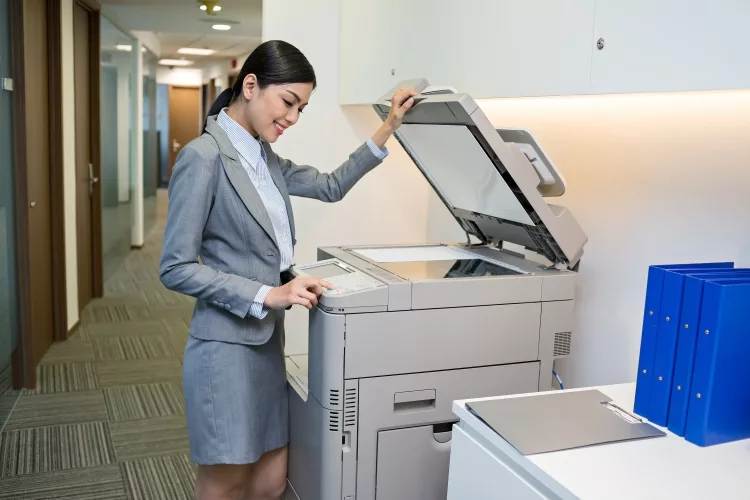This blog post will teach you how to close your scanner. It is important to ensure your scanning surface is clear of any debris, and that the lid is securely fastened before closing the scanner. To close your scanner, simply press down on the two buttons located on either side of the scanner's top edge. When you release these buttons, make sure it clicks in place.
Contents

The scanner is one of the most important pieces of equipment in a business office. It's used to scan documents, pictures, and other items so they can be stored digitally for future reference. Here are some tips on how you can close your scanner when not in use.
Do you need to close the scanner? The answer is no. When scanning, the software will automatically initiate a process that can detect and remove background noise, including on your computer screen.
It does this by using an algorithm that detects areas of brightness and darkness in the photo and then removes any area of brightness it finds outside the actual image of the document being scanned. This way, you don't have to worry about anything distracting from your document while scanning.
There are many reasons why people might need to close scanner. However, not all of these reasons are due to malware or viruses.
If you have a scanner that has been open for more than 20 minutes, it is recommended that you close the scanner in order to conserve your battery life and prevent accidental data loss. Closing the scanner will also free up memory on your mobile device which can improve performance.
You might be wondering when you should close your scanner. There are many factors to consider before making this decision, but the short answer is that it depends on what kind of work you do.
For example, if you're scanning documents for archival purposes or for a law firm, then it's probably best to keep the scanner open. If you're working with images from a photo shoot and need to make selections for printing out proofs, then closing the scanner can help speed up selection process.
Regardless of when you're in the store, it is always a good idea to close your scanner. This helps keep the shop looking tidy and ensures that no one will walk away with something they didn't pay for.
Scanning is a common task in the world of data collection. When you are done with your scan, it can be tempting to just close the scanner window and walk away. However, this is not always an option when using Java because closing a scanner in Java can have unintended consequences that might corrupt its memory. This blog post will explain how to properly close a scanner in Java so you can avoid these issues.
To close a scanner in Java, you can use the close() method of the Scanner class. This method will close the underlying stream associated with the scanner, as well as release any other resources associated with it. For example:
Scanner scanner = new Scanner(System.in);
try {
// use scanner here
} finally {
scanner.close();
}
Alternatively, you can use a try-with-resources statement to automatically close the scanner after it has been used:
try (Scanner scanner = new Scanner(System.in)) {
// use scanner here
}
If a scanner is not closed, it will continue to consume resources (e.g. memory, CPU) even after it is no longer needed. This can lead to performance issues and/or out-of-memory errors in your application. Additionally, any data that has been buffered by the scanner may not be flushed and/or written to the underlying storage mechanism (e.g. HDFS, HBase) properly, which could lead to data loss.
There are many different ways to handle a scanner not closing, but none of them make it any less frustrating. You may be tempted to just leave the scanner open and hope for the best, but that's only going to lead to more wasted paper. If you're anything like me, you'll lose patience with this situation pretty quickly and start slamming the side of your printer in an attempt at getting it closed or trying everything else under the sun.
If you don't close your scanner, it will continue to consume resources even after you're done using it. This can lead to performance issues and even OutOfMemoryErrors in some cases. Always close your scanner when you're done with it to avoid these problems.
Failing to close a scanner can also cause problems if you try to reuse the scanner later. If the scanner is still open, it may not work properly or may give unexpected results. So, always remember to close your scanners when you're finished with them.
For a Scanner Device: If you are no longer using a scanner device, it is important to close the device properly to avoid any potential problems. To close a scanner device:
We can also use the try-with-resources statement to automatically close a Scanner object. This is the recommended way to close a Scanner object. That's all about how to close a scanner in Java. I hope you find this tutorial helpful and if you have any questions, please post them in the comments section below. As always, thanks for reading and happy learning!
 |
 |
 |
 |
Check These Out